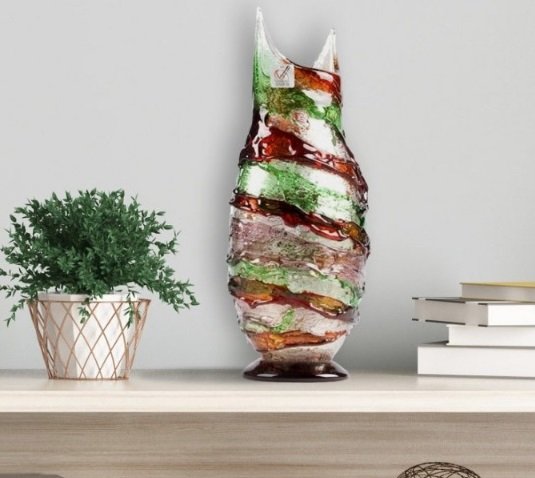Murano glass-making is an art form that has been practiced on the Venetian island of Murano for centuries. The process involves heating glass to high temperatures and manipulating it while it is still hot to create a variety of beautiful and intricate designs. To achieve these designs, Murano glass artisans use a variety of specialized tools and equipment, many of which have been used for centuries.
One of the key tools used in Murano glass-making is the pontello, which is a long metal rod used to shape and manipulate the glass while it is still hot. The pontello is an essential tool for glass-making, as it allows artisans to work with the glass while it is still malleable and pliable. The canna da soffio is another important tool, which is a long metal tube used for blowing air into the glass to create the desired shape. This tool is used to create hollow glass pieces, such as vases and glasses.
In addition to these essential tools, there are many other specialized tools used by Murano glass artisans. The scagno, for example, is a flat metal table where the glass is shaped and cooled. The tagliolo is a cutting tool used to score and cut the glass, while the battuto is a tool used to create texture or pattern on the glass surface. The fornace is a furnace used to heat the glass to high temperatures, and the piazza is a metal plate used to flatten and shape the glass.
Pincers are another important tool used by Murano glass artisans. These are used to grab and shape the glass while it is still hot, and are particularly useful for creating delicate and intricate designs. The marver is a flat surface used to shape and cool the glass, while calipers are used to measure the size and shape of the glass.
Overall, the tools used in Murano glass-making are an essential part of the process, and have been used for centuries to create some of the most beautiful and intricate glassware in the world. While there are many modern tools and techniques that have been introduced in recent years, the traditional tools and methods of Murano glass-making continue to be highly valued by artisans and collectors alike.
Read Other Stories Loved by Our Users – Corporate T-Shirts Singapore: The Benefits of Going Sustainable
The process of making Murano glass has been perfected over centuries and involves several steps. Here are the main steps involved in the Murano glass working process:
Gathering: The first step is to gather the glass on the end of a long metal rod called a punty. The punty is dipped into a pot of molten glass and twisted to collect a small amount of the molten glass.
Shaping: Once the glass is gathered, it is then shaped using a variety of tools. The glassblower will use tools like shears, tongs, and pincers to shape the glass into the desired form. The glass can also be molded by blowing air into the glass using the blowpipe.
Coloring: Coloring is an essential part of the Murano glass working process. The glass is often colored by adding minerals or metal oxides to the molten glass. The glassblower will add the color while the glass is still in a molten state.
Reheating: Once the glass is shaped and colored, it is reheated in a furnace to maintain its malleability. This process is known as annealing.
Finishing: Once the glass is reheated, it can be further shaped or embellished with various techniques. For example, the glassblower can use a technique called “murrine” to create patterns in the glass by layering different colored glass rods and fusing them together.
Cooling: The final step in the Murano glass working process is cooling the glass. The glass is slowly cooled in a kiln to avoid any cracks or breaks.
The entire Murano glass working process requires skill, patience, and precision. The glassblowers who create these beautiful pieces are highly skilled artisans who have often trained for many years to perfect their craft.









































